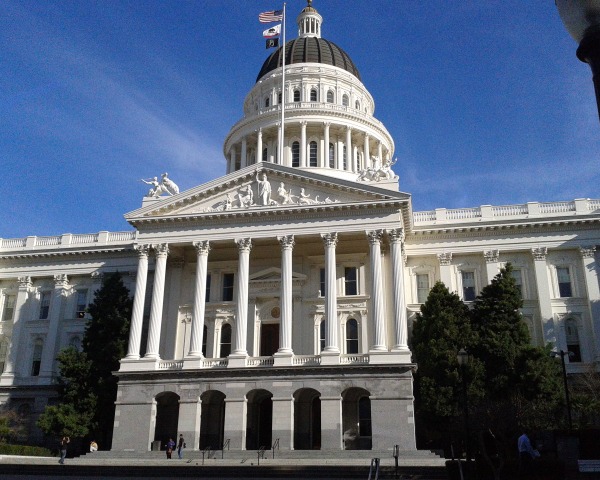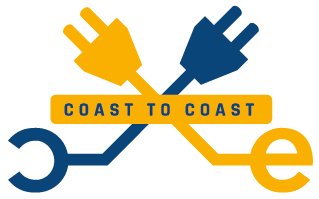
Somehow the Coast to Coast E-Mobility Connection (C2C) could not have had a better start in 2013. Government, industry and universities all made bold decisions supporting the introduction of e-mobility both in California and The Netherlands.
The question is whether these bold steps will bring the much anticipated “giant leap” for e-mobility. This first weblog tries to explore this leap in (only) 5 steps.
Rare Executive order Governor Brown
On February 8th, 2013, Governor Brown made a strong statement by issuing a very rare Executive Order (only his 10th since his election in 2010): 1.5 million ZEV’s in 2025. Further implications of this order are significant: (1) 25% of all state department fleet vehicles must be ZEV’s in 2020, (2) annually 1.5 billion gallons of petroleum will be saved (3) ZEV industry will be a strong and sustainable part of California’s economy.
In talking to California Politicians, Civil Servants, Advisors, Entrepreneurs and Academics, they all pretty much agree that the Executive Order is the result of a solid history of West Coast e-mobility initiatives, rules, regulations and mandates. In fact, the Order has been carefully crafted, tested and negotiated over the past few years. Therefore, it is not a surprise, but it is by far the strongest policy driven support for the introduction of Zero Emission Vehicles (ZEV). Its true success will be measured according to most stakeholders by the number of cars being sold.
300% growth EV’s
If the current rate of 300% growth of PHEV’s and BEV’s continues for the next four years the intermediate goal of 1 million ZEV’s by 2020 seems quite possible. Some argue that the numbers for FCEV’s need to show their results by 2020 as the costly infrastructure investment in hydrogen fueling stations is competing with other PHEV’s and BEV’s.
The Dutch School of Public Policy (NSOB) has already included the Executive Order into their leading international policy research on the strategies and effects on the introduction of e-mobility. Their research supported by the EU, will be presented both at the Interreg Conference in Denmark (March 6-8, 2013) as well as at EVS27 in Barcelona (November 18-20, 2013).

Battery University program
On February 12th, San Jose State University (SJSU) and CalCharge also took a bold step by launching a “Battery University” program with all relevant “battery” stakeholders in California. The crowded gathering at the Network Meeting Center in Santa Clara was very well timed: right after the State of the Union address by President Obama. In fact, Obama himself created quite a steer in the audience as he pledged to support domestic battery programs as well as 15 anticipated centers of innovation and production.
According to many in Silicon Valley, this is realistic: Tesla is ramping up production, Apple is re-sourcing its production from China to the US and San Jose State University is the number one supplier of engineers to Silicon Valley (production) companies. Although in his State of the Valley address on February 11th, Dr. Russell Hancock explained that less Venture Capital investment is flowing into Clean Energy, still many agree that bundling resources, knowledge and investment capacity will improve the changes for a successful battery industry in the Valley.

Tesla HQ to Amsterdam
Early 2013 Tesla made a very important decision on their new European Headquarters. In addition to their European Production Facility in Tilburg, they will have their HQ in Amsterdam. Tesla will also open up a Service Center and Flagship Store in the Dutch capital. These bold steps are supported by their believe that The Netherlands is an ideal testing ground for introduction of e-mobility, as explained by the New York Times on February 8th. The role of DLL and Athlon Car Lease to bring the new Model S onto the Dutch market through their leading EV lease program, has been an important factor as well for Tesla.
Launch new ZERO bike
Furthermore, ZERO Motorcycles will present their new 2013 electric motor bicycles at the annual Conference of the Amsterdam Metropolitan Region in April. Headquartered in Noord-Holland, like Tesla, ZERO indicates that their new bike will do 200+ kilometers at highway speeds. Some argue that a true breakthrough for more US companies investing in The Netherlands, will heavily depend on the flexibility and timeliness of a sustainable “EV-Ecosystem”: a natural cluster around innovative regions like Amsterdam and Eindhoven/Tilburg.

Support social media
Maybe the most important development supporting the introduction of e-mobility is the ever growing activity on social media: weblogs, Twitter accounts, Facebook pages and websites of EV drivers. From the largest group of EV owners in the world with thousands of members (San Francisco Bay Area Nissan LEAF Owners Association) to individuals on Twitter like @VoltDriver (Chevrolet) and @CMaxChat (Ford).
They all are aimed to tell stories and to inspire. Many of the social media activities are supported by video platforms like YouTube. In fact, as far as C2C goes, the home made YouTube film and story behind “Gallons of Light” is in a social media class of its own. In less than 60 seconds the story of the Knapp Family is being told. The Knapp’s just got their Model S delivered and make a 400 mile trip using the Supercharger network along the route. The amateur film is a hit on YouTube (40.000+ views in less than a week). In fact, many are proposing that this should be used as a Tesla commercial!
It is still too early to tell if, how and when the giant leap will occur. For all we know: the start of 2013 could not have been more interesting.
On behalf of the, Coast to Coast E-Mobility Connection
Dr. Peter van Deventer
Program Manager
